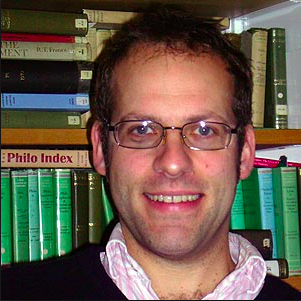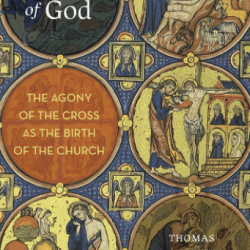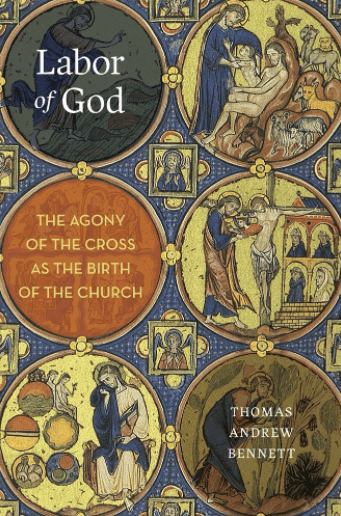A theologian friend sent this to me. It is by Gordon Coulter, and is an exploration of biblical ideas on atonement through an experience with cancer.
By Gordon L. Coulter, Ed.D., with James S. Miser, M.D.
“What can wash away my sin? Nothing but the blood of Jesus:
What can make me whole again? Nothing but the blood of Jesus.
O! Precious is the flow that makes me white as snow;
No other fount I know, nothing but the blood of Jesus.”1
For those raised in the church and Sunday school, the words of the above hymn of the church have meaning, and in most cases can be properly understood and interpreted. Although it still may be understood for those raised during the same time-frame but not raised in Sunday school and church, for the millions of post moderns unfamiliar with the doctrines of the Christian Church it presents a problematic message. To so many the idea of blood may be repulsive, unnecessary and confusing.
“Atonement, in Christian thought, is the act by which God and man are brought together in personal relationship. The term is derived from Anglo–Saxon words meaning, ‘making one,’ hence ‘at-one-ment.’ It presupposes a separation or alienation that needs to be overcome if human beings are to know God and have fellowship with Him…The most common Old Testament expression of atonement was the sacrifice and offering up of the blood of the victim…Life was in the blood(Lev 17:11). The Old Testament language continues to find expression in the New Testament, especially the term ‘blood’…Throughout the New Testament it is made clear that the work of Christ, primarily at the cross, is what provides atonement.”2
This basic truth of the atonement has not changed, but it is time for a new metaphor on the atonement that speaks to modern people about God’s plan for humankind’s salvation. Just as Jesus used the metaphor of human birth to illustrate salvation to Nicodemus in John 3:6 “you must not be surprised by my saying, ‘you must be born again,’”3 we need to find a contemporary means to express clearly the greatest truth in all of history.
In 1997 I was diagnosed with Non-Hodgkin’s Lymphoma. The usual course of treatment began shortly thereafter with chemotherapy, drugs designed to kill or damage cancer cells so that they cannot reproduce. The chemotherapy was difficult and seemed to work for a while, but by September 1998 the cancer had returned in several of my lymph nodes.
At this point in my treatment, after my cancer had returned, an autologous stem cell transplant was recommended, the only hope I thought I had. All conventional therapies had failed. In preparation for the transplant, I received chemotherapy combined with radiation therapy, a treatment that left me weak and vulnerable, destroying not only the cancer cells but also my normal stem cells, cells that make life-sustaining blood cells. When my body was most vulnerable and virtually devoid of white blood cells, my own stem cells, baby cells not yet developed or differentiated, that had been previously harvested and cleaned of most of the cancer, were infused back into my body on Day Zero of the autologous stem cell transplant.
Because for days after the autologous stem cell transplant I was still susceptible to very serious infections and major complications, I was kept in an isolation room. Not only were all people who came in contact with me required to wear a mask, but I had to wear one as an extra precaution to prevent exposure to germs. I stayed in isolation until my blood cell count started to grow back, which meant the autologous stem cells I had received had developed and grown, and my immune system had started to work again. I gradually recovered and was on my way to full strength and a return to my daily activities.
But then something suspicious showed up on a computerized tomographic scan: a tumor was discovered in my abdomen, having grown back, a new and even greater threat to my life. The initial cleansing of my marrow with chemotherapy and radiation and the reinfusion of my own stem cells had failed to rid my body of cancer. Because my bone marrow contained lymphoma cells, the second transplant had to be different. I would need an allogeneic transplant with stem cells and an immune system from another donor; however, my age and physical condition eliminated me as a candidate for bone marrow from the bone marrow bank. The donor had to be a sibling because there was much less chance of rejection. My sister Connie was perfect match.
In preparation for my second transplant I received treatment with chemotherapy and immunosuppressant therapy. On my new(and real) Day Zero, May 8, 2001, new allogeneic stem cells and immune cells from my sister were infused into my body at City of Hope. The new cells mixed with the old ones, modern treatment doesn’t get rid of all the old cells, and over a period of time, the new cells took over and became the dominant cells in my body producing new blood and immune cells. Literally, I became a “new person”, alive because my sister’s stem cells integrated into my body. The infusion caused real changes to take place. The chromosomes of my stem cells literally changed from male to female.
Over the next several weeks I made multiple visits to the hospital where I received blood transfusions, red cells that would carry oxygen to my body increasing my energy and vitality. I received a boost; however, transfusions do not cure cancer. The only thing that was able to cure my cancer was new cancer-free stem cells and an immune system strong enough to keep my body free from this dreaded disease.
At the writing of this article I am cancer-free six years from the second transplant! My earthly life might well be over if not for my sister’s stem cells, the prayers of my family and friends, my medical team at City of Hope and the healing touch of the Great Physician. I required not a transfusion or an infusion of my own contaminated stem cells, but a new source for my blood uncontaminated with cancer cells.
I have given you all “my” information to provide background for a new metaphor for the atonement. My story is best understood in the context of what occurred in the upper room when Christ gave his disciples his body and blood illustrating the cure from sin and His promise of eternal life. Sin is the cancer of the soul that requires more that just a superficial treatment; it requires cleansing from a new source.
Let’s look at the cross this way: when Christ dies there, figuratively speaking his blood, which contains stem cells, was harvested by God and placed in a “bank.” Through His death Christ became the universal donor and a match for all who recognize the need for a new source of uncontaminated, life-giving and life-sustaining blood. His blood is ready for all of us, a new source for our lives, free of the cancer of sin. The only requirement for anyone to receive it is a willingness to realize we cannot survive on our own strength, “with our own blood.” Often it takes months or years to abandon all of the methods we use to “fix” our problems. It is only when we finally arrive at “Day Zero” – our most vulnerable time, realizing all our resources are exhausted – that we become candidates for the new life-giving blood from a new source not our own. The blood that was banked at Christ’s death.
When we finally come to “Day Zero” in our lives, the truth of Paul’s teaching is realized and “we become dead to ourselves.” Only then can we receive this powerful blood source that not only brings healing and wholeness to this earthly life, but continues into eternity.
Post modern men and women need modern ways to illustrate eternal truths. Virtually all of us have been touched by cancer either in our own lives or in the lives of our family and friends. Similarly, every person on earth is infected with the cancer of sin. Humanity continuously searches the many religions that promise a cure for sin. But these religions only result in systems that may make their followers feel good, much like a transfusion; however, these religions do not provide a real cure. We cannot be the source of our own solution to sin. In my medical case my own “autologous stem cells” were not enough to overcome my cancer. There is only one way to end the search for the solution to our own sin: by choosing to place ourselves in the hands of the Great Physician, trusting Him to minister to us while we go through a thorough cleansing. This requires a denial of ourselves, an awareness of our need for a new source of life, our willingness to go to “Day Zero,” and then putting ourselves in God’s hands. Then we will be infused with the life-giving blood source of Jesus Christ, our universal donor, clean from sin.
1 Lowry, Robert, Hymns for the Family of God, p 266.
2. Elwell, Walter A., Comfort, Phillip W., Tyndale Bible Dictionary, Tyndale House Publishers, Wheaton, Illinois, 2001.
3 The Leadership Bible, New International Version, The Zondervan Corporation, 1998
September 19, 2007










